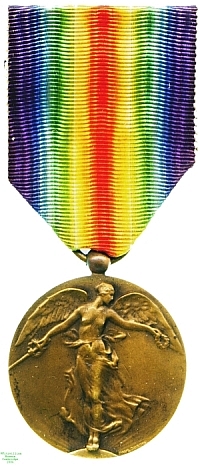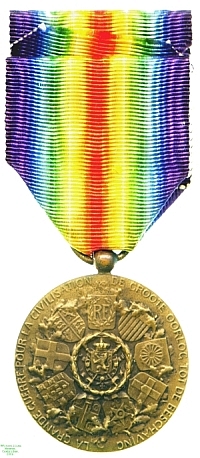Allied Victory Medal 1914-1918 (Belgian), 1919 (Great War 1914-1918)
When the Great War of 1914-1918 had ended, there was a genuine feeling among the victorious Allies that their military efforts had been instrumental in preserving modern civilization, and this and the united spirit of the Alliance were commemorated in a combined issue of medals to those who had seen active service during the conflict. 13 nations in all issued a variety of this medal; all shared the rainbow ribbon and suspension, and all but the Japanese, who lacked a comparable symbolic figure, used a form of Victory on the obverse and a legend on the reverse.
This example of the Victory Medal is one of those issued by the Belgian government. The medal was issued unnamed, and it is not known to whom this example was awarded. Lester Watson purchased it from the London dealers Baldwin at some point before 1928.

